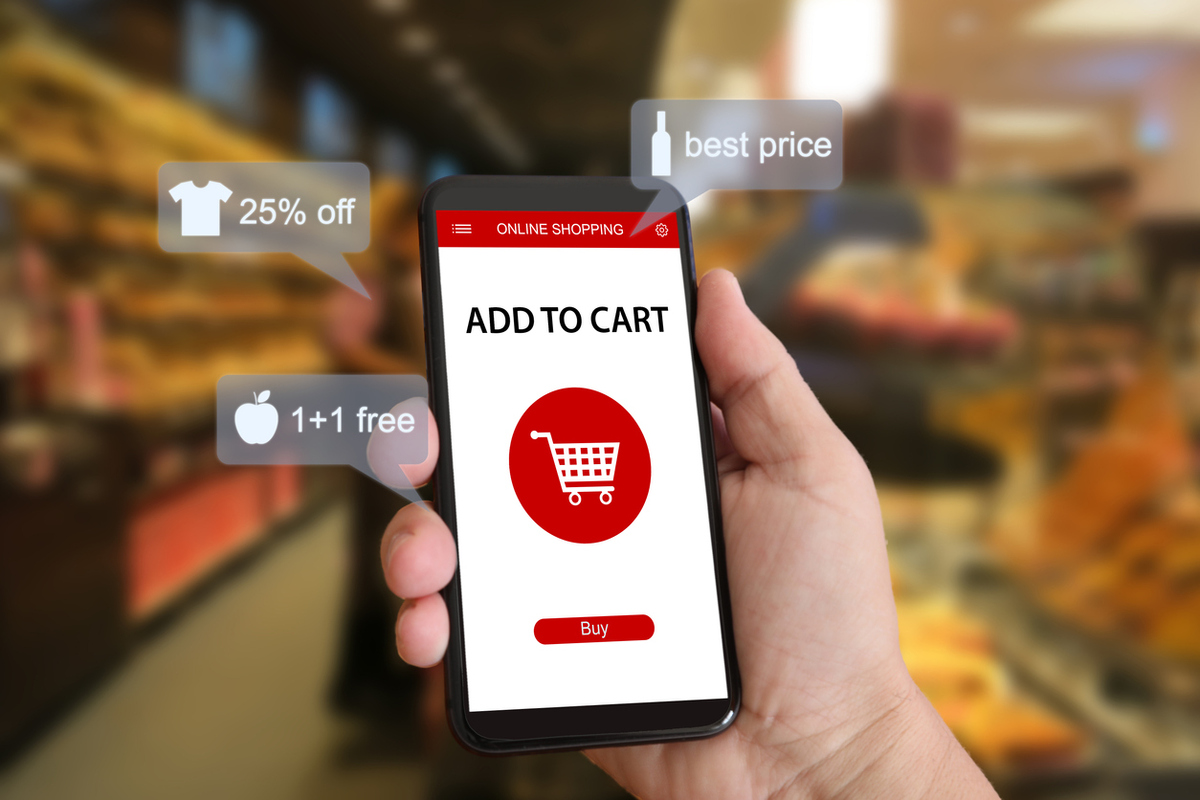Fighting back: How technology can help revitalise the high street

Online shopping has many advantages for consumers, including lower prices, a wider selection and convenience. These advantages are often blamed for the difficulties that high street retailers are experiencing, as shown by the failure of brands such as Wilko, Mothercare and the Arcadia group.
However, the high street is certainly not dead and physical retailers can still compete by offering things that online shopping cannot: a pleasant physical and sensory experience, personal service and the opportunity to socialise.
The key for high street retailers is to turn shops (or high streets) into destinations. Bookshops have long realised the value of providing a comfortable and inviting environment where people can have a coffee as well as browse books. Other shops host VIP shopping evenings with special guests as a way of attracting customers.
But much of the retail sector seems to regard shopping as an ordeal that their customers must endure, rather than a pleasurable experience. There is a lot more that can be done, especially with the help of technology.
Transforming the customer experience
Today’s shoppers, especially Gen Z and Millennials, are looking for more than just a transactional shopping experience. They want to be entertained, educated and inspired. This means creating engaging in-store experiences.
At one level, this can involve interactive displays and product demonstrations, perhaps bolstered by informative displays that might emphasise credentials around sustainability or quality. But many retailers are going a step further with experiential retail or “retail-tainment”. This is about going beyond product features and benefits and focusing on the end-to-end shopping experience.
Experiential retail was originally a 1990s concept that used sound, visuals and even smell in shops to get consumers in the mood to buy. It has since moved on and technology such as segmented eality, smart mirrors and interactive digital signage now offers the shopper opportunities to explore and interact with products. One example is Nike, whose concept store in New York, Nike House of Innovation, uses data from its app to offer products and services tailored to NikePlus members such as access to seasonal exclusives, one-to-one styling and the ability to create personalised products.
Virtual reality (VR) is another tool that can be used to enhance the customer experience. Product recommendations can be linked to VR in store to create technology that consumers may well not have at home. Virtual fitting rooms can let people try a far wider range of styles than they might bother with if they had to actually try clothes on. Personal experiences such as shade matching of cosmetics can be delivered. And fitting rooms can be made interactive by using smart mirrors (around for more than five years) combined with RFID technology to display suggestions for accessories, sizes and colours on a touchscreen mirror and offer the ability to share the results on social media.
This isn’t just about making shopping fun: it’s also about developing a connection between individual shoppers and retail brands, with 91 per cent of consumers feeling more positively towards brands after participating in events and experiences.
Getting to know customers as individuals
Online retailers find it hard to get to know their customers as individuals. They can, of course, make deductions based on behaviour over time or the actions of other customers who buy similar products. They don’t generally speak to their customers on a one-to-one basis, but physical stores do have this opportunity.
Using facial recognition to identify people as they come into a physical store might be a little spooky. But AI can still be used to provide a highly personal experience if people are prepared to log in to an app when they enter, or approach, a store. Based on previous behaviour, AI can answer customer questions, recommend products and provide personalised discounts. Of course, online retailers can do this too, but offline retailers can leverage local shopping conditions such as the weather as well as providing personal welcomes.
Personal welcomes are not the only reason physical stores are pursuing knowledge of individual customers. The behaviour and opinions of shoppers are a very valuable, and somewhat neglected, source of insight. By engaging with individual consumers or allowing them to experiment with new products and services, a huge amount of qualitative data can be gathered that can add colour to surveys and purchase analytics. When supported by AI, this data can be used to test different products and services with different groups of customers and provide essential intelligence for retail buyers.
Making it easy for shoppers
There are no queues for the checkout when you shop online. Apple has long understood that waiting in line is a frustrating experience that can result in abandoned purchases, so its store staff are equipped with tablets that enable them to process purchases as well as answer detailed questions.
But there is little need to rely on an employee to complete a transaction today. The ultimate in customer convenience is (for those who choose it) self-checkout: kiosks powered by AI and computer vision are becoming increasingly common in retail stores, helping to reduce labour costs and improve customer convenience.
Robots can also enhance the customer experience by answering customer queries. This is especially convenient at busy shopping times, but it is also a positive for those shoppers who dislike having to ask a sales associate questions (and who fear the hard sell when they do). By understanding and answering common questions, robots free up time for human customer service representatives to deal with more complex queries and requests.
Offline isn’t just offline
While there are many things that high street shops can do to compete with ecommerce, they must never forget that consumers always have the option to shop online. Any successful offline strategy will recognise this, taking the advantages of offline shopping and complementing it with the advantages that only a physical retail environment can provide.
For example, online shopping allows people to buy easily, often at advantageous prices and with free or cheap delivery. Physical stores need to match the price and delivery offer and exceed it by offering click and collect and returns facilities as well.
High street retailers need to realign their value proposition to incorporate digital experiences. Increasingly, the customer journey starts online and so retailers need a strong online presence to drive people to their physical stores. But they should also be confident that, given effort and imagination, the high street can offer so much more than the sterile experience of buying online.
Most Viewed
Winston House, 3rd Floor, Units 306-309, 2-4 Dollis Park, London, N3 1HF
23-29 Hendon Lane, London, N3 1RT
020 8349 4363
© 2025, Lyonsdown Limited. Business Reporter® is a registered trademark of Lyonsdown Ltd. VAT registration number: 830519543






